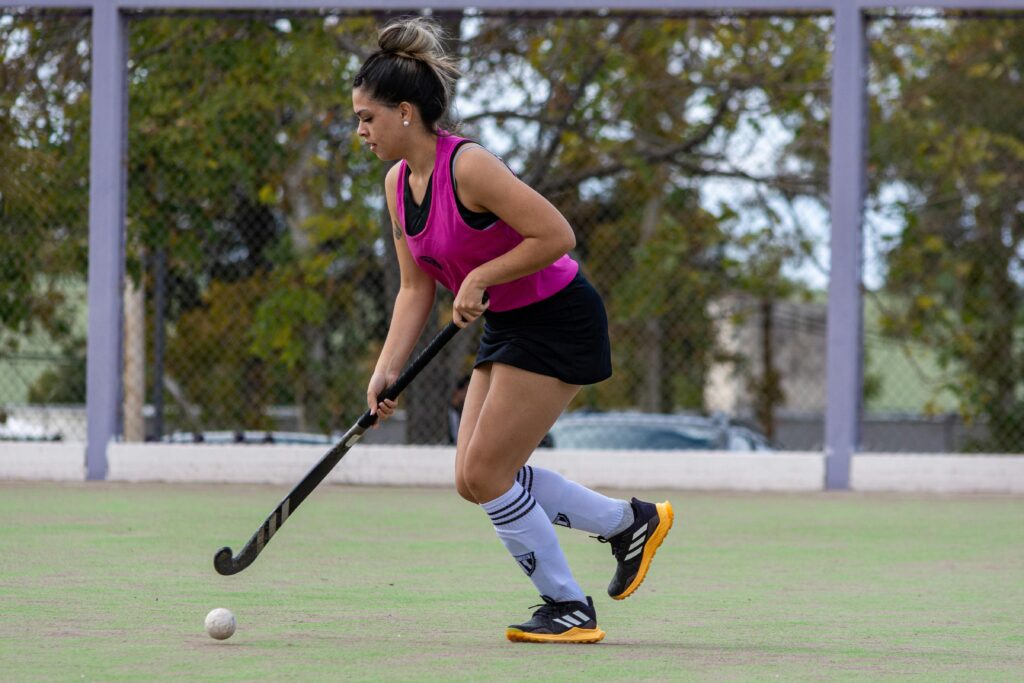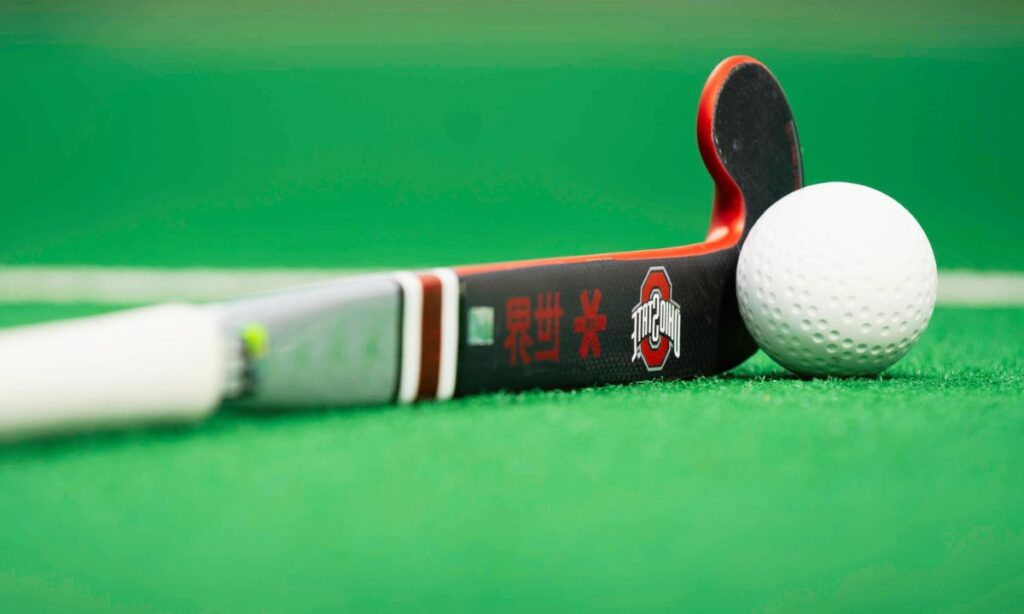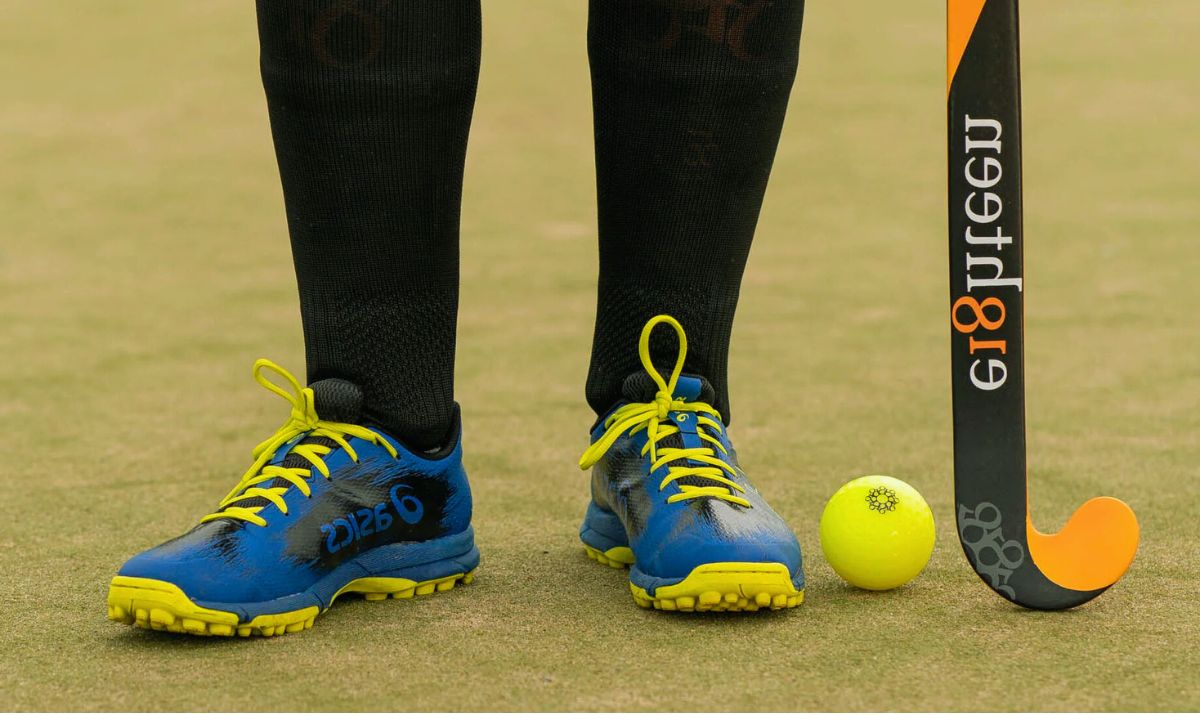Understanding the official field hockey ball weight is more than just trivia—it’s fundamental to fair play, player skill, and game consistency. Coaches emphasize it during training, and players rely on it instinctively in matches. A ball that’s too light or too heavy can throw off passes, shots, and positioning. Every aspect, from bounce to drag flick accuracy, hinges on the ball’s feel. So, before you pick up your stick, knowing the official ball weight gives you an edge. Let’s unpack why this detail matters more than most players realize.
What Is the Official Field Hockey Ball Weight?
The official field hockey ball weight is regulated between 156 and 163 grams—set by the International Hockey Federation (FIH). Sticking to these standards ensures every match has uniform feel and performance. The weight range allows for minor manufacturing variations but keeps play predictable. Whether you’re practicing or playing a national tournament, using a ball within this range helps maintain muscle memory and tactic precision. If you ever feel a ball is off, it’s probably outside specs. So checking weight isn’t just nitpicking—it’s about maintaining consistency in every drill and match.
Why Does This Weight Range Matter?
Sticking to the official field hockey ball weight keeps the game fair and skills transferable. A lighter ball may lift unexpectedly or travel too fast; a heavier ball slows down plays and affects flicks. By standardizing weight, players can focus on technique, not adjusting to different bounces or speeds. Think of it like a well-oiled machine—it works best when all parts are aligned. Coaches and players know that if the ball weight is within the official range, training sessions will be realistic, and match instincts will be sharp. It’s subtle, but it’s the backbone of serious field hockey.

Regulations Beyond Weight: Size and Material
Weight isn’t the only factor—the official field hockey ball weight comes with specs for diameter (71.3–74.8 mm) and construction material. Most match balls are hard PVC or rubber shells with a cork centre. This combo gives consistent bounce, grip, and resilience. Manufacturers follow these specs closely to meet FIH approval, which you’ll see stamped on packaging. When you buy a certified ball, you’re getting more than a number—you’re getting performance assurance. So next time you pick one, check both the weight range and the certification—it means the ball will feel right when it matters.
How Weight Impacts Ball Control
Mastering ball control starts with the official field hockey ball weight. At regulation weight, passes glide predictably across turf, and trapping feels centered. A light ball may bounce too high or spin too much, while a heavy ball sticks to your stick but slows reaction-based plays. During close dribbles, a standard-weight ball moves with your stick rhythmically, giving you confidence to maneuver. When shooting, that weight helps deliver power without overcompensation. Essentially, ball weight is the silent partner in every touch—it influences feel, touch, and instinct without you thinking about it.
The Role of Ball Weight in Aerial Flicks
Aerials and drag flicks rely heavily on the official field hockey ball weight. At tournaments like the Olympics, the ball travels fast, low, and clean—thanks to consistent ball weight. Too light, and the ball drifts or lifts prematurely. Slightly heavy, and your flick loses speed or trajectory. Having a ball that meets the specs means your technique transfers from practice to game intact. When you see that ball zip past the keeper, it’s not luck—it’s physics, precision, and perfect weight alignment.
Why Youth Players Can Benefit from Slightly Lighter Balls
Younger athletes may struggle with regulation-weight balls at first, which is why coaches often use slightly lighter training balls. These ease control development and reduce strain on growing muscles. Over time, they move to official field hockey ball weight to develop match-ready strength and technique. This progression is important: early success builds confidence, while proper weight builds real skill. Using developmentally appropriate balls allows young players to grow naturally into the official ball weight, ensuring both safety and future performance.
Choosing Match vs. Training Balls
Match balls follow the official field hockey ball weight, while training balls can vary. A common strategy is using regulation-weight balls for scrimmages or advanced drills, and lighter ones for footwork or learning sessions. That dual approach keeps practice safe and productive, while still introducing the match experience gradually. Training with both types lets players develop technique and strength before becoming dependable match performers. Coaches swear by this method—it prevents early fatigue and injury, while preserving reflex and bowling accuracy once they graduate to official weight.
How to Check Your Ball’s Weight
Want to know if your ball meets the official field hockey ball weight specs? A kitchen or sport scale can confirm weight to the nearest gram. If it falls under 156 g or over 163 g, it’s out of spec. Even older balls can absorb moisture, making them heavier. Regular checks should be part of equipment upkeep. For clubs, having a scale available ensures compliance. It sounds excessive, but once you’ve played with a mis-weighted ball, you’ll appreciate how much it changes gameplay. Staying within that range is a small effort with big payoff.
Impact of Surface on Ball Weight Experience
Different surfaces change how the official field hockey ball weight feels. On firm synthetic turf, a regulation-weight ball feels smooth and fast. On grass or softer artificial surfaces, that same ball may slow and bounce less. Still, staying within official weight means your touch and technique remain calibrated. You don’t need a different ball on every surface—just an understanding of how ball movement will adapt. This makes training more versatile without compromising your technique or muscle memory.
The Brands Behind Regulated Balls
Quality brands like Kookaburra, Grays, and Slazenger regularly produce balls that meet the official field hockey ball weight. These names carry trust because they stick within the 156–163 g range and meet all FIH specs. They also add grip patterns and waterproofing for consistent performance. When shopping, look for certification labels—and pick name brands if you want reliable quality. Off‑brand balls might save money but risk weight drift, surface damage, or uncontrolled bounce. For players aiming to improve, staying loyal to quality brands is a smart move.
Ball Weight and Game Safety
Believe it or not, the official field hockey ball weight plays a role in safety too. A ball that’s too heavy raises risk of injury on deflections or aerial plays. A ball that’s too light may bounce irregularly, causing unpredictable contact. Standard-weight balls are predictable and tested for impact energy. Referees watch for unusual ball behavior—anything outside specs may trigger a safety call. So using regulated-weight balls isn’t only about performance—it’s about protecting players and avoiding needless stoppages or injuries.
Maintaining Ball Integrity Over Time
Even the best official field hockey ball weight can be skewed by neglect. Store balls in dry places, clean them after muddy or wet games, and avoid sun exposure. Water seepage or shell cracks can add weight and affect bounce. Regular cleaning and inspection help preserve balance. Some teams even rotate balls to distribute wear evenly. A little upkeep keeps your regulation weight true and your ball performing like new. In the long run, this practice saves money and frustration—no one wants to play with a wonky ball in a key match.
Real-World Tips from Coaches
Coaches often say: “If your passes are off, check the ball.” They’ve seen players shift weight or use mismatched balls, causing sloppiness. That’s why drills often start with a check on the official field hockey ball weight and condition. Routine gear checks ensure fair practice. One coach told me, “We weigh balls weekly—no exceptions.” It’s not overkill. It’s attention to detail. In close contests, a slight shift in ball weight can cost a goal or a defensive split.
How Field Conditions Interact with Ball Weight
Even when a ball meets the official field hockey ball weight, field conditions affect how it behaves. A wet or uneven pitch can absorb momentum, making the ball feel heavier during play. On dry, synthetic turf, the same ball may feel quicker and lighter. Experienced players adjust technique subtly, but beginners often confuse poor control with their own fault when it’s really the pitch interacting with the ball. That’s why knowing the standard weight helps—it eliminates guesswork. By focusing on your surroundings and using a certified ball, your play becomes sharper and more adaptable.
Indoor vs. Outdoor Field Hockey Ball Weight
Though the official field hockey ball weight is standardized for outdoor play, indoor hockey sometimes uses slightly different balls. Indoor balls are often lighter and smoother to accommodate the faster, rebound-heavy surface of indoor courts. However, many training programs now prefer to use standard-weight balls indoors to keep consistency in muscle memory. If you’re switching between formats, make sure you understand which ball type your game or practice session requires. Training with both can enhance adaptability but always return to the official ball to stay match-ready.
The Science Behind the Weight Range
You might wonder—why exactly is the official field hockey ball weight set between 156–163 grams? It’s all about optimal force, control, and safety. Too light, and wind resistance or lift makes the ball unpredictable. Too heavy, and the ball can become dangerous at high speeds. The official weight strikes a balance: light enough for skillful control, heavy enough to stay grounded during high-speed passes. Physics plays a big role here. The set range allows a player to master momentum, drag, and friction on various surfaces while minimizing risk of injury from deflections or rebounds.
Custom or Colored Balls vs. Official Weight
Many schools and clubs use colored or branded balls for training or events. While visually appealing, not all of these match the official field hockey ball weight. Some may be too light for proper gameplay or too heavy to control well. If you’re training seriously, always verify the ball’s specifications. Custom balls can be great for fun or team branding, but for real progress and muscle memory, always return to regulation weight. Having both types in your training kit is fine—just be sure you know which is which.
The Role of Temperature in Ball Weight Perception
Cold weather can make the ball feel heavier, even if it meets the official field hockey ball weight standard. That’s because temperature affects how materials behave—cold makes the ball harder and seemingly heavier on the stick. In warm conditions, the same ball may feel lighter and bounce more. This is why international games, played across varying climates, emphasize strict adherence to weight specifications. Your touch, timing, and passing rhythm may need minor adjustments based on how the ball responds in different temperatures. It’s not a flaw—it’s part of being a complete player.
Ball Weight and Shot Power Balance
Shot power is a key skill in hockey, and it’s directly tied to the official field hockey ball weight. Players develop timing and force based on how the ball moves at that weight. Use a lighter ball, and your shots might overshoot; use a heavier one, and they might not lift or travel far enough. Practicing with an official-weight ball teaches your body the perfect balance of swing speed and stick angle. Over time, this builds muscle memory that transfers directly into competitive matches—making your shots more consistent, accurate, and effective.
FIH-Approved Match Balls and Their Certification
Want to ensure your ball matches the official field hockey ball weight? Look for FIH (International Hockey Federation) certification. Approved match balls usually include an FIH logo or wording that confirms compliance with international standards. This approval doesn’t just guarantee weight—it also confirms correct diameter, bounce, and material construction. If you’re shopping for serious play, skip uncertified balls. Certification ensures you’re using equipment tested in global-level games, giving you an edge in performance and peace of mind during play. It’s worth investing in certified balls if you train regularly or play competitively.
How Ball Weight Affects Passing Distance
Passing distance in hockey is a mix of skill and physics—and the official field hockey ball weight plays a major role. A regulation-weight ball provides the right resistance and feel for short, medium, and long passes. With practice, players learn how much strength to apply without overdoing it. A ball that’s too light may travel too far with minimal effort, disrupting timing. A ball too heavy might fall short, breaking momentum. Sticking with the official ball weight teaches your brain and body to gauge passing force accurately across different game situations.
Common Mistakes Players Make With Ball Weight
One of the biggest mistakes players make is training with off-spec balls while preparing for competitive matches. It leads to subtle changes in muscle coordination and timing. Others assume any ball in the gear room is fine, never checking its weight or surface condition. Over time, this builds bad habits that become visible under pressure. The fix? Always play with a ball that meets the official field hockey ball weight standard. Also, rotate your training balls regularly to avoid excess wear and performance issues. Small details make a big difference in competitive play.
Conclusion – Respecting the Weight Builds Better Play
Whether you’re a beginner or a competitive player, respecting the official field hockey ball weight builds better habits, smarter technique, and more consistent play. It’s one of those often-overlooked fundamentals that separates good players from great ones. By choosing certified match balls, keeping them in top condition, and understanding how environment affects ball feel, you’re setting yourself up for better performance and fewer surprises on the pitch. Every time you pass, trap, or flick with the right-weight ball, you’re not just playing—you’re progressing with purpose.
Why Consistency in Ball Weight Matters for Team Training
When every player trains with the same official field hockey ball weight, the whole team benefits from consistency. Passes are timed better, traps are smoother, and communication on the field becomes more intuitive. If one player uses a heavier ball while another trains with a lighter one, even small differences in control can throw off a team’s rhythm. Coaches often emphasize “uniform gear” not just for discipline, but for real-world gameplay accuracy. The more everyone practices with regulation-weight balls, the more cohesive the play becomes on game day. That shared consistency translates into stronger team performance.
How Ball Weight Affects Dribbling Skills
Dribbling is a core skill that becomes noticeably different depending on the ball’s weight. A lighter ball might bounce more or move unpredictably, making it harder to maintain close control. On the other hand, a heavier ball could drag slightly, slowing down quick turns or flicks. That’s why the official field hockey ball weight is important—it offers the perfect balance for sharp stick work. When you master dribbling with the correct weight, you’re building real match-ready skill. Everything from acceleration to directional changes becomes smoother and more reliable with a regulation-weight ball.

Choosing the Right Ball for Youth vs. Adult Players
For younger players, many coaches opt for slightly lighter training balls to avoid injury and build confidence. However, as players grow and improve, transitioning to the official field hockey ball weight is essential. It helps develop the strength and technique required for competitive matches. Some training sessions mix light and regulation balls to ease this transition. But by the time players enter competitive leagues or high school teams, they should be using official-weight balls regularly. It builds proper timing, stronger hits, and helps them adjust to the demands of real matches more effectively.
Field Hockey Ball Maintenance and Its Impact on Weight
A ball’s condition can subtly affect its performance—even if it originally matched the official field hockey ball weight. Over time, dirt buildup, water absorption, or surface wear can alter how the ball rolls and feels. Cracks or chips also impact weight distribution and balance. Regular cleaning and storage in a dry place help maintain consistency. If a ball feels off during training, check it with a scale. Serious players keep at least a few well-maintained regulation-weight balls for practice to ensure every session is realistic and consistent with match conditions.
Final Thoughts – Respecting the Details Makes You Better
In field hockey, the small things add up. Whether you’re working on shots, passes, or footwork, practicing with the official field hockey ball weight is a non-negotiable for real growth. It keeps your technique sharp, ensures your training mirrors match play, and helps you avoid unnecessary mistakes. Too often, players focus on flashy moves and overlook equipment basics. But the best players respect every detail—from the weight of the ball to the grip of their stick. Master the fundamentals with the right gear, and you’ll find yourself playing with more confidence and control every time you hit the pitch.

